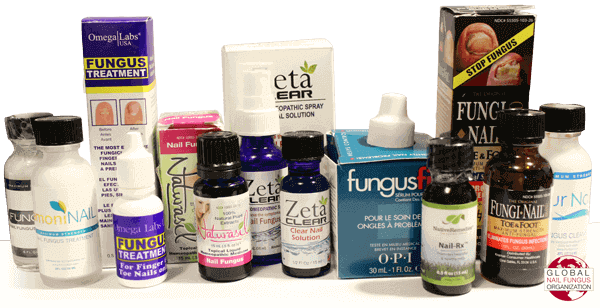Table of Contents
Undecylenic Acid for Fingernail and Toenail Fungus
Undecylenic Acid for Fingernail and Toenail Fungus
Undecylenic acid (C11H20O2) is a fungistatic compound. That is, it is a compound that inhibits the growth of fungi. It is a fatty acid that may be synthetically manufactured or extracted from sources in nature. It is prepared via the distillation of castor oil. Undecylenic acid is commonly included in topical creams used to fight ringworm, athlete’s foot, and other dermal fungal infections. Undecylenic acid is also known as 10-undecenoic acid. It is approved by the FDA for topical administration and is included in the official Inactive Ingredient Database.
How Does it Work?
The exact mechanism that gives undecylenic acid its anti-fungal effects is poorly understood. What is known however, is that undecylenic acid works by inhibiting biosynthesis within fungal cells. It prevents the cell from creating the compounds necessary for building hyphae. This stunted growth prevents the fungal colony from maturing and eventually reproducing.
Proper Use of Undecylenic Acid
-
Most undecylenic acid products do not require a prescription. However, always consult your doctor when purchasing a new product.
-
Follow dosage regulations provided by your physician or listed on the product. Do not exceed the recommended dosage.
-
Process (Topical):
-
Sanitize – Wash your hands before handling any topical product. Also wash the target area in soap and water. Ensure that both hands as well as the target area are clean and dry before application.
-
Apply – If the product is a cream or liquid ointment, apply a sufficient amount to cover the affected area. Also cover a small part of the surrounding skin to ensure that spores do not grow into new fungal colonies. If the product is a powder, sprinkle it on the affected area, and allow it to sit. Anti-fungal powders may also be sprinkled into shoes and socks.
-
Maintenance – Avoid covering the affected region in tight bandages or other non-breathable wrapping. Keep the area aerated. Light gauze may be used if necessary or recommended by a doctor. Change wrapping regularly.
-
Storage – Store undecylenic acid topicals away from moisture, heat, and light. Some products may be flammable. Others may lose efficacy when not properly stored. Keep undecylenic acid topicals out of reach from children.
-
Undecylenic acid treatments usually produce results within four weeks. Your physician may recommend continuing treatment after this period in order to ensure that the infection does not return. If symptoms do not improve or if adverse reactions occur, consult your doctor.
Products That Contain Undecylenic Acid
Undecylenic acid may be administered topically or orally. The former is generally considered the safer route of administration. Gel capsules containing undecylenic acid are used to treat fungal infections in the intestinal tract.This is a list of fungal nail infection treatments that contain undecylenic acid as the main ingredient.
-
Emoninail: Currently the highest-rated antifungal on Global Nail Fungus Organization, Emoninail has the optimal concentration of 10% undecylenic acid. This ensures the product is strong enough to effectively treat nail fungus, while at the same time, mild enough not to harm the skin. Combined with Tea Tree Oil, it safely penetrates the structure of keratinized tissue. Emoninail contains two anti-inflammatory essential oils: tea tree oil and sunflower oil.
-
Funginix: This product also contains a concentration of 10% undecylenic acid, as well as herbal extracts specifically chosen to maintain health of keratinized tissue.
-
Zetaclear: This product is available in both topical treatment form and oral spray. The topical treatment contains 10% undecylenic acid. Like the previous two products on this list, it contains essential oils which reduce inflammation and promote healing of infected tissue from within.
Safety of Undecylenic Acid
Undecylenic acid does not penetrate keratinized tissue on its own. WebMD does not recommend the use of undecylenic acid for treatment of fungi on the scalp and nails as a result. However, products that include undecylenic acid in their ingredients list also contain oils that help the formula penetrate the hard surface of the nail. Be aware that undecylenic acid may cause irritation when applied on skin in high concentrations. The safest and most effective topical antifungal products contain a concentration of 10% undecylenic acid.
Do not use undecylenic acid with other compounds or treatments if you are unsure of the reactions.
Also note that some people may be allergic to undecylenic acid. If you suspect you are experiencing an allergic reaction, cease use immediately and call a physician.
For more information on the most effective topical treatments that contain undecylenic acid, please visit Global Nail Fungus Organization’s product comparison page.







